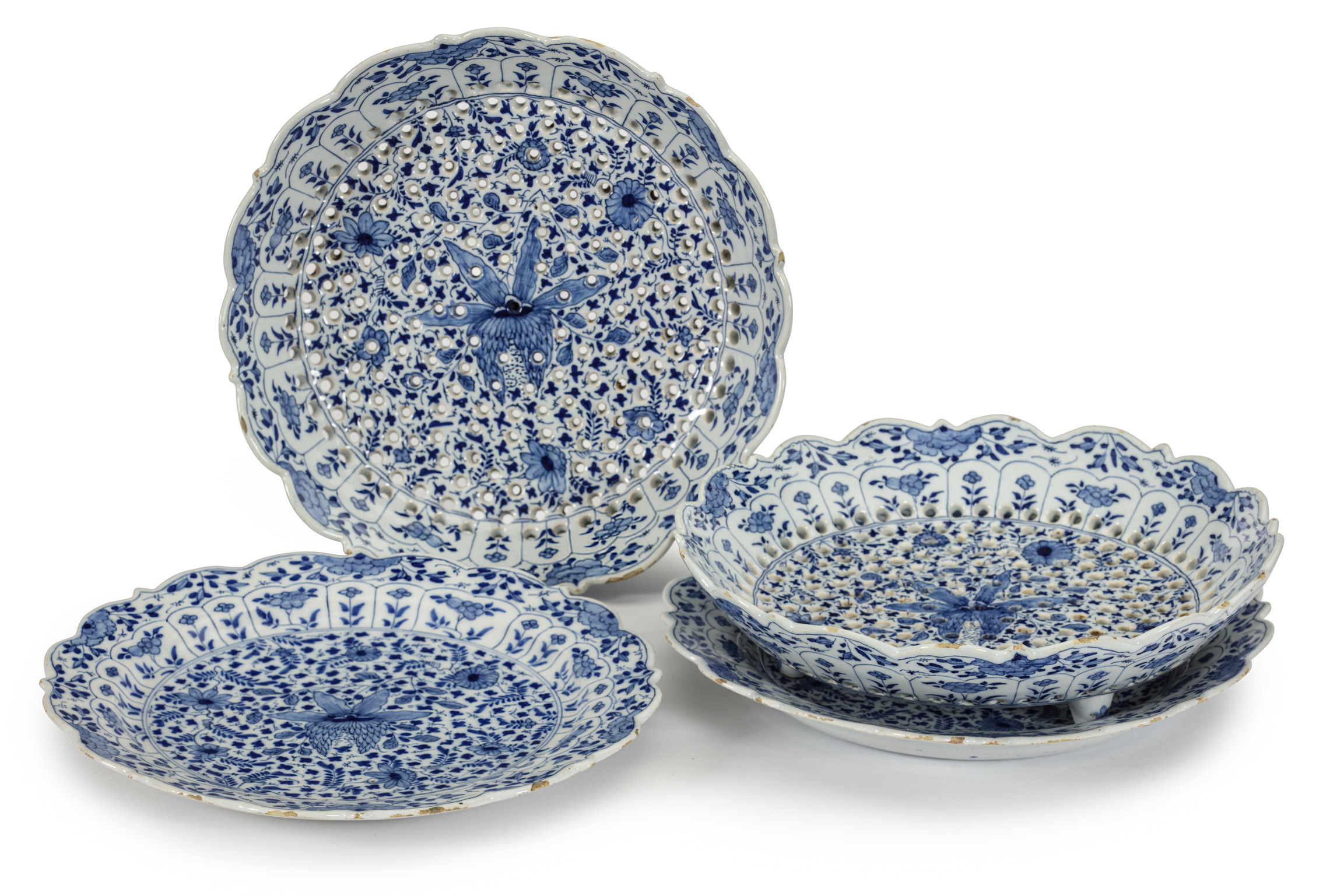![]()
Images on this website are licensed under a
Creative Commons Attribution-NoDerivs 3.0 Unported License.
OBJECT
•D2343. Pair of Blue and White Reticulated Fruit Strainers and Stands
Delft, circa 1760
Each unidentifiably marked with a meander device in blue
Each piece with a scalloped and barbed rim edged with a border of flowering plants alternated by budding sprigs around a paneled border with flowering sprigs, the interior of the stands painted with a large floral sprig and six large flowerheads amidst a profusion of sprigs, repeated on the elaborately pierced openwork in the center of the strainers and the exterior of the dishes with a border of flowering plants alternated by budding sprigs around a paneled border with flowering sprigs and affixed on the bottom with three short scroll feet.
DIMENSIONS
Width of stands: 24.5 cm. (9.6 in.)
NOTE
The well-laid table was the culmination of splendor. Inspired by the French court of Louis XIV (reigned from 1643 to 1715), the dishes were laid out on the table per course and guests could serve themselves from the platters within their reach. The most beautiful tablewares were designed in accordance with the fashionable dining style, such as these extraordinary Delftware fruit strainers and stands. The fruit strainers were often used at the end of the dinner, when fruits and various pastries were served. The fruits were placed on the strainer and rinsed under a pump, whereafter the stand could be placed directly on its dish on the table. The strainer also allowed the fruits to ventilate and thus remain fresh for a longer time. Not only were these objects highly efficient and functional, they were also a feast for the eye. Lavishly decorated strainers were always created in pairs in the most beautiful shapes.
SIMILAR EXAMPLES
A pair of fruit strainers of this model with a similar scalloped and barbed rim is illustrated in Aronson 2021, pp. 6-7, no. 1. In Museum Arnhem is another fruit dish with a scalloped and barbed rim marked for De Porceleyne Byl (The Porcelain Axe) factory (inv. no. AB 8362ab). Another circular fruit dish and stand with a scalloped and barbed rim, marked for De Porceleyne Schotel (The Porcelain Dish) factory, is in the Kunstmuseum, The Hague (inv. no. OC(D) 116-1904), illustrated in Van Aken-Fehmers 2001, p. 124, no. 7. A further single example, marked for De Porceleyne Byl (The Porcelain Axe) factory, is in the Prinsenhof Museum, Delft (inv. no. R1014).









